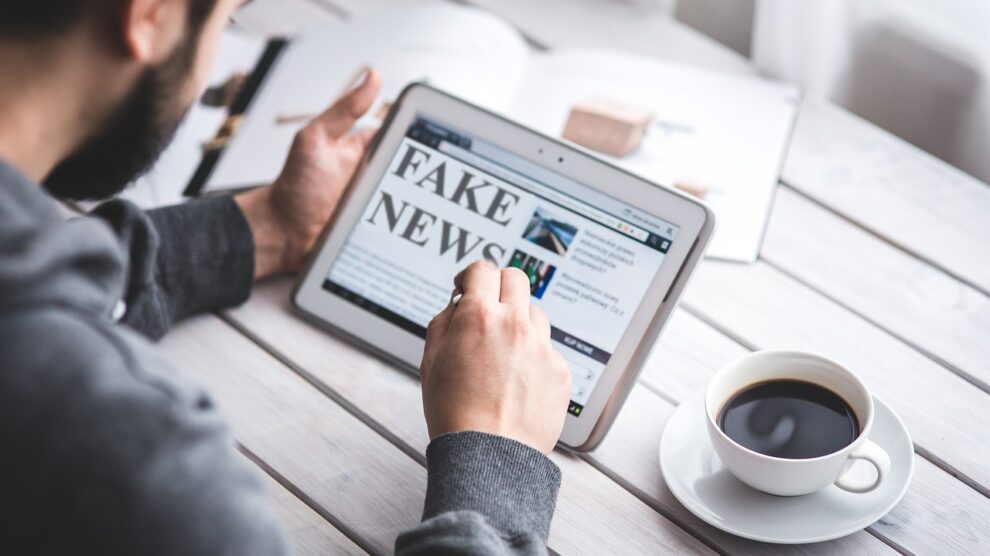The term “Fake News” might once have seemed like an oxymoron — after all, the news is inherently supposed to be true and real. But the prevalence of misinformation and disinformation is such that this once contradictory term now describes an increasingly important feature in our society. Namely, some media outlets purport to offer news when actually, they publish ideological propaganda, sensationalized “entertainment,” or outright falsehoods.
When people believe these stories and pass them on to others, they gain traction in the public realm, where they lead to (and exacerbate) social divisions. In some cases, disinformation also serves to distract from urgent social problems and thwart public-policy solutions.
No one wants to be fooled with fake news, much less infect others with it. So, how does one best be able to spot it and help stop its spread?
Why Fake News Is a Problem
Fake news has increased exponentially in recent years, and unfortunately remains widespread today. According to a NewsGuard study, content from fake news sites nearly doubled on social media in the first 11 months of 2019 alone.
Perhaps the most famous poster child for the willful dissemination of misinformation is Fox News, which was recently forced to pay $787.5 million to Dominion Voting Systems for defaming the voting machine company with “active malice.” Indeed, studies have long shown that consuming content from this outlet makes viewers — even skeptical ones who are merely checking in to see what the other side is saying — demonstrably less informed about public events.
The 2021 documentary “Framing Britney Spears” also demonstrated how the tabloid press used paparazzi photographs to fabricate false narratives about the pop icon. Not surprisingly, Spears did not thrive under these conditions of malevolent interest and constant harassment. Meanwhile, repeated misogynistic headlines and breathless mythmaking created such a widespread perception of her “instability” that a court stripped her of her autonomy and placed her in a conservatorship. She was only able to win her freedom back over a decade later.
The Importance of Media Literacy Training
According to the MIT Media Lab, the biggest cause for this firehose of fake news is that many Americans don’t pay attention to whether or not the content they share online is factually accurate. In fact, the American Psychological Association suggests they may share it just to signal their membership in a larger socio-political group or “online tribe.”
There is hope, however. The MIT Media Lab’s follow-up study found that suggesting people consider the accuracy of their social media posts before hitting “submit” could help stem the tide.
That’s where media literacy training comes in. When you understand how to identify misleading content, and use these tools to evaluate the social media slurry, you can help stop fake news in its tracks — and prevent it from spreading.
Here are three tips to help you improve your media literacy.
Tip #1: Verify Sources
Always double-check the credibility of your sources before accepting or sharing any content you find online. Reliable outlets should have a track record of accuracy and transparency, and research should confirm that their viewers understand what’s going on in the world better than someone who doesn’t consume news at all. In general, not-for-profit sources of news such as NPR perform best in the US on these measures.
Reliable news sources should also avoid ideological bias. The company Ad Fontes Media periodically updates a handy chart that identifies which supposed “news” outlets actually report the news, and which provide increasingly problematic partisan commentary. Type the name of a given source in the search box, and the interactive interface will immediately show you its position on the map, as well as the data points that went into determining it.
Tip #2: Cross-reference Information
Never believe a single source, especially if it doesn’t have a shining reputation, so always be sure to check other sources to see if they agree with the information. If a lot of reputable sources agree, it doesn’t guarantee the content is true, but the chances go up.
On the other hand, if even just a single reputable source questions the claims you’ve come across somewhere else, then it’s a red flag for fake news. No matter how much you might want to believe what’s in that first source, it’s wise to hold off. If no consensus has yet emerged among reputable sources, it’s a good idea to wait until one does.
Tip #3: Check Your Facts Before Sharing
Before sharing information on social media, do your due diligence and run it through a fact-checking website. For instance, the Annenberg Public Policy Center’s fact-checkers can confirm or deny the authenticity of many claims from politicians on both sides of the aisle, as well as stories about health, immigration, and climate change.
Another important fact-checking website is Snopes, which quickly investigates trending images and other posts on social media and debunks them if necessary.
Promote Media Literacy In Your Circle
When people share fake news, it makes them look credulous, if not downright gullible. The spread of this misinformation also has a negative impact on our nation as a whole.
To spare your own friends and family from this fate and help reverse these troubling trends, consider using your social media accounts to promote media literacy. Share resources and tips on how to evaluate news sources correctly, such as this article.
Education is the key to combating fake news. Together, we can restore the “real news” to its rightful place as just plain “the news” and make “fake news” an oxymoron again.





